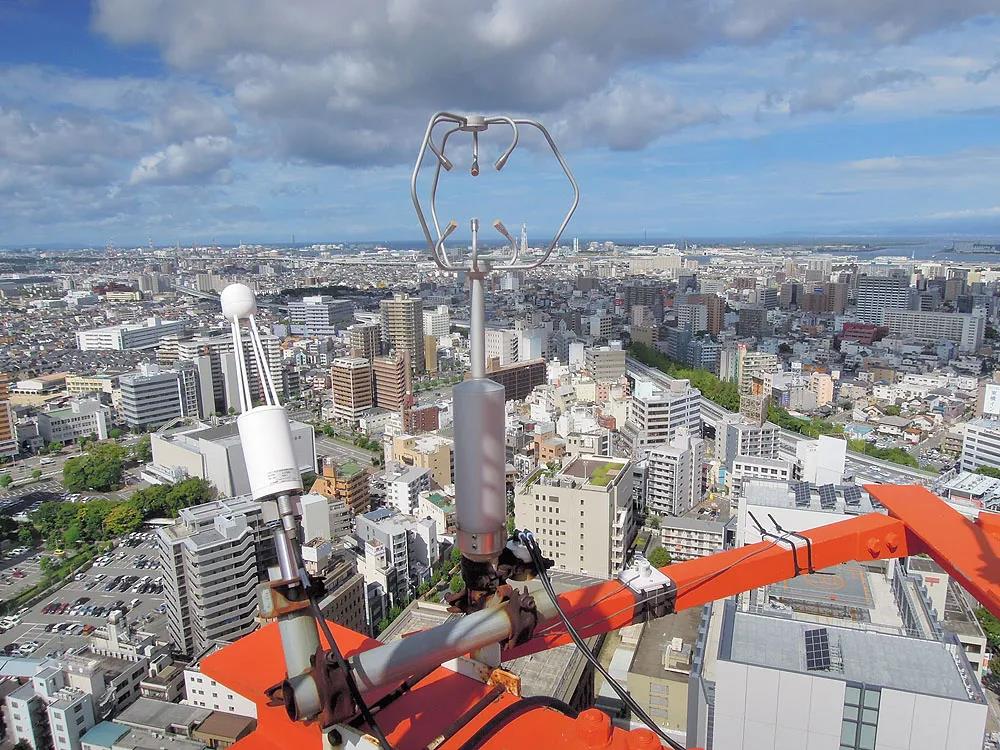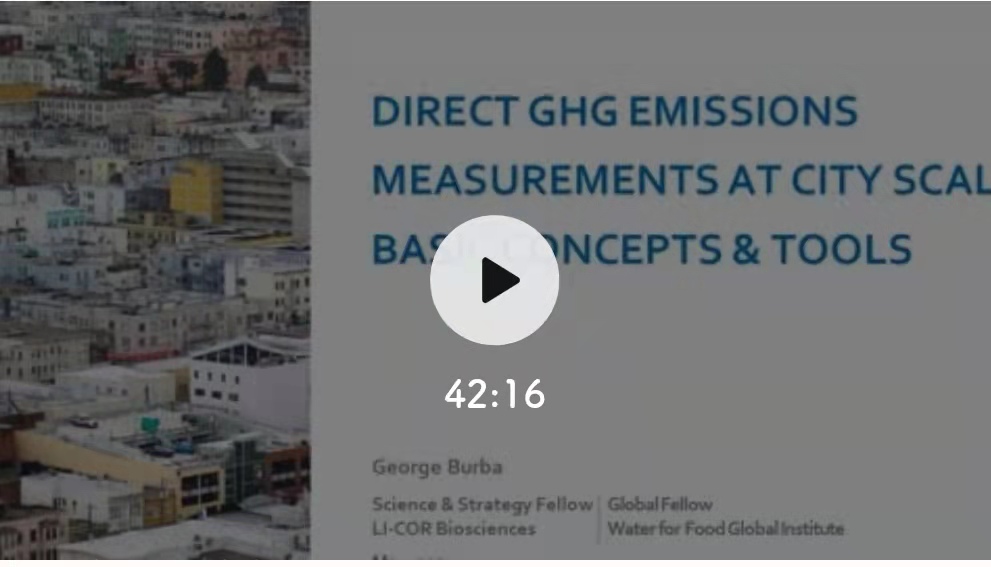城市是车辆、住宅、商业、工业汇聚之地,温室气体排放量大。
涡度协方差方法,为准确测量这种复杂“生态系统”的温室气体排放提供了可能。

LI-COR涡度协方差通量测量系统
图片来源/大阪府立大学http://atmenv.envi.osakafu-u.ac.jp/
这些测量数据,可在评估城市温室气体排放现状、优化交通组织、规划城市发展、制定减排政策等方面发挥重要作用。
为帮助广大通量研究工作者深入了解这一新兴科研领域,5月13日,LI-COR应用科学家George Burba和Dave Johnson,就这一主题和大家分享了通量测量系统知识和相关案例。
该讲座主要内容包括:
● 直接测量方法提供精准城市温室气体排放数据
● 涡度协方差通量测量系统的组成
● 城市生态系统温室气体排放研究案例
下面是视频回放和Q&A整理(后附ppt)
Q&A整理
Q1 Derrick Lai: Hi Dave, thanks for your sharing and love the virtual background of Hong Kong! In high-density and heterogeneous cities with high rises like Hong Kong, what is your suggestion of making reliable eddy covariance flux measurements? Would we be making measurements in the roughness sublayer only, instead of in the constant flux layer as the EC method assumes? Thanks.
Derrick Lai:Dave您好!谢谢您的分享。像香港这种“高密度”城市,下垫面复杂,您能否讲一下如何使用涡度协方差测量方法进行可信的通量观测呢?我们是应该在粗糙亚层(the Roughness Sublayer)测量,还是应该在EC方法中提到的常通量层(the Constant Flux Layer)呢?
A1 James Kathilankal: I guess it depends upon your experiment, to cover the entire city you probably have to be on top of the highest building, but you could study sections of the city by installing on the tallest building in a particular area. This is a challenge with urban ecosystems, the lack of homogeneity
James Kathilankal:我觉得这取决于您具体的实验目的。如果您的研究区域是整个城市,仪器的安装高度应该位于城市最高建筑物的上方;如果您研究城市中的某些区域,仪器安装在特定区域最高建筑物的顶部即可。由于城市下垫面异质性大,这对于测量来说,确实是个挑战。
Q2 Derrick Lai: Thanks, James. In natural ecosystems, we have to put the sensor at a height of < 1.5 times the canopy height. In the urban ecosystem, say with a mean building height of 100 m, are we measuring the flux properly by placing the sensor at only 1-2 m above the building top?
Derrick Lai:谢谢您的回答。在自然生态系统中,我们一般把通量测量仪器架设在大约1.5倍冠层高度的地方。而在城市生态系统中,比如建筑物的平均高度为100m,我们如果把仪器安装在建筑物顶部1-2m的地方,貌似不太合适?
A2 James Kathilankal: Choosing the tallest building will help as at that point the building can be considered as part of the tower and when you measure at such heights, some of these requirements can be relaxed as we are measuring much larger eddies which move slowly that what you will find in short ecosystems
James Kathilankal:选取最高的建筑物来架设仪器是合理的,这个建筑物可被认为是通量观测塔的一部分。对仪器的安装高度要求可适当放宽,仪器可测量到更多大的涡旋运动(Larger Eddies)。(编者按:理想情况下应该安装在建筑物平均高度1.5倍的地方,然而实现起来会很麻烦。)
Q3 Yingqi Zheng: Wind directions at a 30-minute scale measured by the ultrasonic anemometer, after correction, show great discrepancies from those measured by other devices. Would this cause error in estimating footprint?
Yingqi Zheng:使用超声风速仪测量得到的30min的风向数据,和气象站的风向数据差异较大。这是否会影响Footprint计算呢?
A3 James Kathilankal: ultrasonic measurements will have some discrepancies, but you can get a better temporal resolution from this data, and using diagnostics from the anemometer you can filter out unrealistic values..so average values tend to agree well with slow measuring sensors
James Kathilankal:超声风速仪的数据(高时间分辨率的风向数据)会和慢速传感器的测量数据存在一定差异。使用诊断值,您可以把不可信的数据滤掉。理论上,经过这种数据处理,两者应保持较好的一致性。
Q4 Chaerin Park: Thank you for the good presentation. In the presentation, you mentioned that there is software that can analyze whether the observed co2 flux data originated in a specific area, is this software made by li-cor? Can all the co2 flux data observed through li-cor equipment be analyzed using this software?
Chaerin Park: 谢谢精彩的讲座内容。您提到有软件可分析通量数据的来源。请问这个软件是LI-COR研发的吗?所有使用LI-COR仪器获取的数据,都可以使用这个软件来做这种分析吗?
A4 James Kathilankal: The software which is used is the Tovi software (beta version). Flux footprint modeling can be used to allocate fluxes, but this is more for getting average values.
James Kathilankal: 这个软件是Tovi,该软件由LI-COR自主研发。您可使用其中的Footprint模型来进行这种分析。另外,您可登陆https://www.licor.com/tovi/了解有关这个软件的更多详细信息(编者按:该软件可免费试用30天)。

